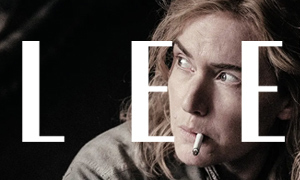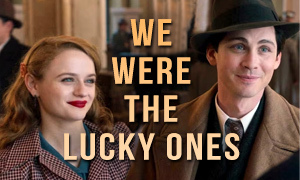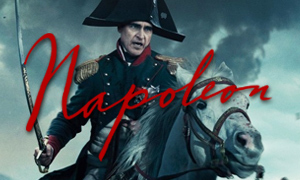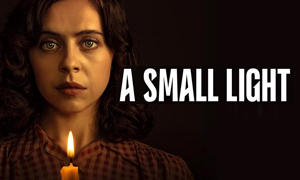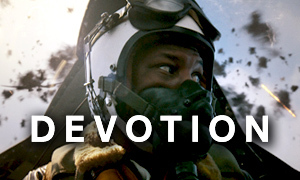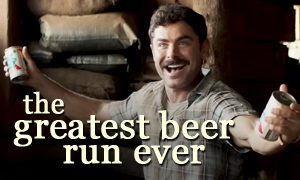Unbroken: History vs. Hollywood
based on the book 'Unbroken' by Laura Hillenbrand
| REEL FACE: | REAL FACE: |
Jack O'Connell
Born: August 1, 1990 Birthplace: Derby, England, UK | Louis Zamperini
Born: January 26, 1917 Birthplace: Olean, New York, USA Death: July 2, 2014, Los Angeles, California, USA (pneumonia) |
C.J. Valleroy
Birthplace: Oklahoma City, Oklahoma, USA | Young Louis
Photo circa 1927 |
Alex Russell
Born: December 11, 1987 Birthplace: Queensland, Australia | Pete Zamperini
Born: May 24, 1915 Birthplace: Dunkirk, New York, USA Death: May 15, 2008, San Clemente, California, USA |
Miyavi (Takamasa Ishihara)
Born: September 14, 1981 Birthplace: Konohana-ku, Osaka, Osaka Prefecture, Japan | Mutsuhiro Watanabe (aka "The Bird")
Born: circa 1918 Birthplace: Japan Death: April 2003 |
Domhnall Gleeson
Born: May 12, 1983 Birthplace: Dublin, Ireland | Lt. Russell Allen "Phil" Phillips
Born: August 1, 1916 Birthplace: Greencastle, Indiana, USA Death: December 18, 1998, Marietta, Georgia, USA |
Finn Wittrock
Born: October 28, 1984 Birthplace: Lenox, Massachusetts, USA | SSgt. Francis "Mac" McNamara
Born: February 19, 1920 Birthplace: Pollagh County Mayo, Ireland Death: June 30, 1943, Pacific Ocean (at sea) (starvation/dehydration) |
Garrett Hedlund
Born: September 3, 1984 Birthplace: Roseau, Minnesota, USA | LtCdr. John Allison Fitzgerald
Born: May 16, 1908 Birthplace: California, USA Death: July 6, 1990 |
Jai Courtney
Born: March 15, 1986 Birthplace: Sydney, Australia | 1Lt. Charleton Hugh "Cup" Cuppernell
Birthplace: California, USA |
Morgan Griffin
Born: June 4, 1992 Birthplace: Australia | Cynthia Applewhite
Born: January 20, 1926 Birthplace: USA Death: February 21, 2001, Los Angeles, California, USA (cancer) |
Did Louis really start running track to avoid getting into trouble?
Yes. The Unbroken true story reveals that, like in the movie, the real Louis Zamperini had a knack for getting into trouble when he was growing up. Some of his early antics included jumping from the caboose of a train when his family was on their way to California. He also had a penchant for stealing and fighting. He started smoking at age five, picking up discarded cigarette butts while walking to kindergarten. He began drinking when he was eight, hiding under the dinner table sipping glasses of wine. -Unbroken book
His brother Pete thought that getting Louis involved in the high school track team would be a good way for him to embrace something other than mischief. "Pete told me I had to quit drinking and smoking if I wanted to do well," Louis told Running Times Magazine, "and that I had to run, run, run." Pete was already a star on the team. "I decided that summer to go all out. Overnight I became fanatical. I wouldn't even have a milkshake."
Did Louis Zamperini meet Adolf Hitler?
Yes. Despite finishing eighth in the men's 5000-meter event at the 1936 Summer Olympics in Berlin, Germany, his final lap was an astonishing 56 seconds. It caught the attention of Adolf Hitler, who requested that Louie come over to his box in the stands. In researching the Unbroken true story, we learned that Hitler reached from his box and shook Louie's hand, saying something in German. A translator interpreted, "Ah, you're the boy with the fast finish." Louie's interaction with Hitler is not shown in the movie. -Unbroken book
Did Louie's brother really tell him, "A moment of pain is worth a lifetime of glory"?
Yes. However, unlike the movie, Louie's brother Pete told him this as they sat on their bed years earlier, not right before Louie left for the 1936 Olympics in Berlin, Germany. Louie did remember Pete's words during his race, which helped him to achieve the 56-second final lap in the men's 5000-meter event. The book states the phrase as, "A lifetime of glory is worth a moment of pain."
Exactly how many men died when the B-24 bomber Louie was on crashed?
The B-24 Liberator bomber Louie was on, nicknamed The Green Hornet, had a history of mechanical issues. "The plane was used for salvaging parts from it," Louie said in a CBN interview. "We were reluctant to take it, but they said it passed inspection and it should be alright." On May 27, 1943, while on a search mission for a lost aircraft and crew, the bomber succumbed to its mechanical woes. Its two left engines cut out, and it crashed into the Pacific Ocean 850 miles south of Oahu, Hawaii, killing eight of the eleven men on board. In addition to Zamperini, pilot Russell Allen "Phil" Phillips and tail gunner Francis "Mac" McNamara survived the crash. -Unbroken book
Did one of the crash survivors really eat all of the chocolate?
Yes. Our investigation into the Unbroken true story confirmed that, in an act of panic, tail gunner Francis "Mac" McNamara ate all of the chocolate bars (approximately 6) as the other men slept in the two rafts during the first night. This ruined Louie's plan to allot each man one square of chocolate in the morning and one in the evening, which would last them a few days. Mac had been at his wits end the day before, and Louie had to slap him across the face with the back of his hand to stop him from wailing, "We're going to die!" Louie was disappointed in Mac over the chocolate but figured they would be rescued soon anyway. -Unbroken book
Did they really spot a rescue plane the day after the crash?
Yes. "It's weird," said the real Louis Zamperini. "From the sky a thousand feet up, a raft looks like a whitecap, and they didn't see us." -CBN
How long did Louis Zamperini spend stranded at sea on the raft?
After his plane went down in the Pacific Ocean on May 27, 1943, the real Louis Zamperini spent 47 days stranded at sea on the life raft. Like in the movie, tail gunner Francis McNamara survived 33 days on the raft, eventually succumbing to dehydration and starvation. Zamperini and pilot Russell Allen "Phil" Phillips were picked up by the Japanese on July 13, 1943 (approx.), just before reaching an atoll in the Marshall Islands. They had drifted approximately 2,000 miles. -Unbroken book
Did they really catch and eat an albatross raw?
Yes. According to the Unbroken movie true story, the men first killed an albatross that landed on the raft. They cut it open but the stench was so bad they couldn't get the meat into their mouths without gagging. Instead, they used it as bait to catch small fish. "The next thing you know another albatross landed," said Louie, "and I told the guys, 'We got to try to eat it.' So this one, we devoured it like a hot fudge sundae, you know, it was just delicious" (CBN). In Laura Hillenbrand's book, Louie says that the second albatross didn't smell as bad when they cut it open, but they did have to force the meat down.
Were Louis Zamperini and his fellow survivors bombarded by sharks?
Yes. Starting the first day on the raft, sharks were a constant nuisance. They were so close at times that the men would only have to reach out their hands to touch them. Louie described them as varying between six feet and more than twenty feet long (the latter being a great white shark). The three men could feel tremors from the predators rubbing their backs along the bottom of the rafts. The sharks slapped the rafts with their tails, rammed into them, splashed water onto the men, and even jumped at them. The men smacked the sharks away with oars or their bare hands.
Like in the movie, they caught a small shark and killed it, cutting it open with the edge of a mirror and eating the liver for food (the only edible part). They were able to do this twice, after which no more small sharks came around. -Unbroken book
Did a Japanese bomber really shoot at the life raft?
Yes. On their twenty-seventh day adrift, the three men were strafed several times by a Japanese bomber, which left dozens of bullet holes in the life rafts (they would later be told by the Japanese that this was impossible, as it was a violation of their military code of honor). Phil's raft became unusable, and Louie cut up the canvas from it and used it for a canopy. The three men were then confined to the two-man raft they were able to patch. -Unbroken book
Had Louis Zamperini really been declared KIA?
Yes. First he was declared missing at sea, and then on May 28, 1944, a year and a day after his plane crashed, he was mistakenly declared KIA (killed in action). The following month Louie's parents received a death certificate signed by President Franklin D. Roosevelt.
"In grateful memory of First Lieutenant Louis S. Zamperini, A.S. No. 0-663341, who died in the service of his country in the Central Pacific Area, May 28, 1944. He stands in the unbroken line of patriots who have dared to die that freedom might live, and grow, and increase its blessings. Freedom lives, and through it, he lives -- in a way that humbles the undertakings of most men." -The New York Times
How much did Louie weigh at the end of the 47 days stranded on the raft?
Both Louis Zamperini and pilot Russell Allen "Phil" Phillips lost half their body weight or more. Prior to crashing at sea, Louie's last recorded body weight was 155 pounds. Upon their capture by the Japanese, Louie weighed 67, 79.5, or 87 pounds, depending on the source. "When they first put us in a cell, I just looked down at my knees, my bones, and my skin, and I just started crying. Now, here I'm an athlete, I remember myself when I was a powerful, physical athlete, and now I'm just skin and bone and a skeleton, that's all, and that brought tears to my eyes." -60 Minutes
Were Louie and Phil really taken to "Execution Island"?
Yes. The Unbroken movie true story verifies that they were taken to the atoll of Kwajalein in the Marshall Islands. It was nicknamed "Execution Island" due to the fact that nine marines had already been beheaded there. "They took great joy in telling us we were going to be executed," Zamperini told 60 Minutes, "and they'd always go through the motion, you know, samurai sword [swipes hand across neck] and so forth. ... Every morning we woke up and we expected, well this is the day, this is the day they're going to kill us."
Were conditions in the POW cells really as bad as in the movie?
Yes. In a lot of ways, the real-life experiences were much worse. "The worst part I think about being in the cell was [Japanese] submarines," Louie revealed in a CBN interview. "A submarine came in and of course, they never see prisoners. So, they can't wait, so they line up in front of your cell, 75, 80 men lined up like going to a movie premiere. And every one of them is either swearing at ya, throwing rocks at ya, or jabbing ya with sticks, spitting on ya. You know, and here you are 65 pounds, you got constant diarrhea, your starved, they throw a rice ball, they don't give it to ya. It falls on the floor. You have to spend hours picking up every grain of rice mixed in with the dirt. It just seemed like that line would never end."
On three occasions, Louie was injected and used as a guinea pig for medical experiments. He had to describe to his captors what the injection was doing to his body. Louie said that he experienced dizziness and prickly spots all over his body. They only stopped when he told them that he was on the verge of passing out. -CBN
Was the Japanese prison guard known as "The Bird" based on a real person?
Yes. Louis Zamperini met Corporal Mutsuhiro Watanabe (aka "The Bird") at the Omori POW camp located on an island in Tokyo Bay. When Watanabe was transferred to Naoetsu, the most hellish POW camp in Japan, Louis Zamperini was eventually transferred there too as punishment for not doing the Radio Tokyo propaganda broadcast. Prison guard Mutsuhiro Watanabe was so relentless in his torture of the POWs that it left Louis with nightmares and constant dread.
"I wasn't given military orders," said the real Mutsuhiro Watanabe in a 1998 interview. "Because of my own personal feelings, I treated the prisoners strictly as enemies of Japan. Zamperini was well known to me. If he says he was beaten by Watanabe, then such a thing probably occurred at the camp, if you consider my personal feelings at the time." -CBS Sports
Coming from a wealthy Japanese family of high pedigree, Corporal Watanabe, who had a privileged upbringing, felt humiliated and disgraced when his application to become an officer was rejected. This infuriated him and made him bitterly jealous of officers, including Louis Zamperini. It is believed that this was part of the reason for his cruelty. In 1945, Mutsuhiro Watanabe was ranked number 23 on General Douglas MacArthur's list of the 40 most wanted war criminals in Japan. However, he went into hiding for seven years and never ended up being prosecuted. -Unbroken book
Was "The Bird" really as deranged as he is in the movie?
Yes. Japanese prison guard Mutsuhiro Watanabe (aka "The Bird") would beat a POW for hours and then moments later he would hug him and give the POW beer, handfuls of candy, and cigarettes. Watanabe would then cry and promise to never mistreat another prisoner. Hours later, he would return to club the POWs. The camp accountant, Yuicho Hatto, stated that Watanabe was a sexual sadist who freely admitted that beating prisoners satisfied his sexual desires. -Unbroken book
As the book states, "Watanabe beat POWs every day, fracturing their windpipes, rupturing their eardrums, shattering their teeth, tearing one man's ear half off, leaving men unconscious. ... He ordered one man to report to him to be punched in the face every night for three weeks. He practiced judo on an appendectomy patient." As he unleashed his madness, Watanabe would howl, drool and sometimes cry. Just before he went into a violent rage, his right eyelid would sag.
Did the Japanese really tear Commander Fitzgerald's fingernails off?
Yes. In the movie, Louie (Jack O'Connell) notices that Commander John Fitzgerald's fingernails had been torn off. In real life, the Japanese clubbed Fitzgerald, stuck penknives under his fingernails, and tore his fingernails off. They also performed the "water cure" method of torture, whereby a prisoner is tipped backwards and water is poured up his nose as his mouth is held shut, causing him to eventually pass out. Like in the movie, Fitzgerald never gave up any information. -Unbroken book
Was Louie really forced to race at the POW camp?
Yes, and like in the Unbroken movie, Louie was trounced in his race against a Japanese runner who had been brought in to the camp. The guards mocked Louie and his own frailty scared him. However, this wasn't his only race at the camp. The following spring a Japanese civilian was brought in and Louie beat him as his fellow captives cheered. He was clubbed in the head for winning but said it was worth it. He threw a third race against yet another Japanese runner, only after the runner told him in English that he wanted to impress his girlfriend who had come to watch. He promised Louie a rice ball and ended up giving him two. -Unbroken book
Was Louie defiant like in the movie?
Yes, and like in the Unbroken movie, the true story confirms that this infuriated guard Mutsuhiro Watanabe (aka "The Bird"), who gave Louie daily beatings. Louie was eventually knocked down by The Bird, but only because, as depicted in the movie, The Bird cracked Louie so hard in the left temple with a belt buckle that Louie's legs collapsed underneath him. The beatings left Louie deaf in his left ear for several weeks. -Unbroken book
Did Louie really refuse to read a propaganda message on Radio Tokyo?
Yes. Like in the movie, the real Louis Zamperini was at first allowed to read his own message on Radio Tokyo, in which he included information about fellow POWs so that their families would know they were still alive too. Louie's message is read near verbatim in the movie by actor Jack O'Connell, "Hello mother and father, relatives and friends. This is your Louie talking. ... I am now interned in the Tokyo prisoners' camp and am being treated as well as can be expected under war time conditions..." The latter, of course, was a lie.
Louie was then asked to do a second broadcast. Unlike the movie, this did not happen immediately following the first broadcast. He was sent back to the camp for a period of time before they invited him back to the radio station. He wrote his own message again, but at the last minute, they gave him a prewritten one filled with propaganda. Like in the movie, Louis Zamperini refused to read it, and he had finally realized why he had never been killed earlier. The Japanese saw an American Olympian as a valuable asset. They just needed to weaken him a bit first. It explained why he wasn't beheaded on "Execution Island" and why he was sent to Omori under the ruthless guard Mutsuhiro "The Bird" Watanabe.
Similar to the movie, Louie was given a tasty American-style meal. He was also introduced to a group of American and Australian POWs, who were obeying the Japanese and working as propagandists. Louie tried to shake their hands, but they were too ashamed to make eye contact with him.
Did Zamperini's fellow POWs take turns punching him in the face?
Yes. As a punishment for stealing fish, Mutsuhiro Watanabe (aka "The Bird") had the thieves and the officers, including Louis Zamperini, stand before the enlisted men, who took turns punching each thief and officer in the face (not just Zamperini). Any man who refused would suffer the same fate as the officers and thieves. The Bird reasoned that the officers should have had control of the men, therefore they should be punished too. -Unbroken book
Did Louie's tormentor really force him to hold a beam in the air?
Yes. First, Mutsuhiro Watanabe tried to pin a goat's death on Louis Zamperini, then he set out to punish Louis for going to the camp doctor without permission for severe dysentery. He made Louis hold a six-foot long wooden beam above his head, telling another guard to hit Louis with his gun if he lowered his arms. This differs from the movie, which has Watanabe telling the guard to shoot Louis if he drops the beam. At first, Watanabe mocked Louis and laughed, but as time ticked by, he realized that his punishment had turned into a moment of defiance for Louis. After holding the beam aloft for 37 minutes, Watanabe charged Louis and punched him in the stomach. The beam fell and struck Louis in the head, momentarily knocking him out. This differs from the movie, in which Watanabe continues to beat Louis after the beam falls. -Unbroken book
Did Louie really promise to dedicate his whole life to God if he survived?
Did Japanese Nationalists really ask for Unbroken to be banned from their country?
Yes. Japanese nationalists were upset over the way Unbroken portrays the Japanese guards as being ruthless and abusive, saying, "This movie has no credibility and is immoral." However, there is plenty of documentation and forensic evidence to back up the movie. Earlier this year, The Railway Man also depicted the horrors endured by POWs who were held by the Japanese, with one Japanese guard spending a lifetime atoning for his actions during WWII. -EW.com
Did Louis Zamperini ever meet his tormentor "The Bird" again?
No. The real Louis Zamperini was in Japan in 1998 to carry the Olympic torch in Nagano to celebrate the start of the Winter Games. He requested to meet with Mutsuhiro Watanabe (aka "The Bird"), but his former tormentor declined the meeting. Zamperini had even prepared a letter to give to Watanabe, which in part stated, "...I committed my life to Christ. Love replaced the hate I had for you. Christ said, 'Forgive your enemies and pray for them.'" -Unbroken book
This outcome differs from British POW Eric Lomax's story told in The Railway Man movie, which finds Lomax confronting his former Japanese tormentor years later. However, in that case, Lomax's tormentor had already spent years atoning for his actions.
Louis Zamperini Interviews & Related Unbroken Videos
Dive deeper into the Unbroken true story with the interviews below, including a candid Louis Zamperini interview and a short documentary that features the rare Mutsuhiro Watanabe interview.
WATCH Louis Zamperini InterviewIn this Louis Zamperini interview, the
Olympian/POW recalls meeting Adolf Hitler,
surviving at sea, and becoming a POW. The
interview follows the events in the movie.
Zamperini also discusses life after he
returned home, including turning to
drinking and discovering Christ, the
moment his ongoing nightmares of his
tormentor, the Bird, ended. |
WATCH Mutsuhiro Watanabe Interview - The BirdThis CBS Sports documentary on
Louis Zamperini features the rare
Mutsuhiro Watanabe interview (aka "The
Bird"). It was produced by CBS
Sports as part of their coverage of
the 1998 Olympic Winter Games in Nagano,
Japan. Zamperini and his story are
featured first. The Bird interview starts
at the 30:20 mark. |
WATCH Unbroken Olympics FeaturetteDuring the 2014 Winter Olympics in
February, a special trailer for
Unbroken aired, which splices
together footage from the movie with
pictures and interview clips of the real
Olympian and prisoner of war survivor
Louis Zamperini. Director Angelina Jolie
is also featured. |
WATCH Unbroken TrailerAdapted from Laura Hillenbrand's book of
the same name and directed by Angelina
Jolie from a script by the Coen brothers,
Unbroken tells the story of
Olympian and WWII hero Louis "Louie"
Zamperini, whose B-24 suffered mechanical
difficulties and went down over the
Pacific Ocean, leaving him stranded at
sea. He was captured by the Japanese and
held in an internment camp until the end
of the war. Louis Zamperini died on July
2, 2014 at age 97. |
WATCH Unbroken Trailer 2This is the Unbroken Trailer 2
for the movie that chronicles the life of
Olympian and war hero Louis "Louie"
Zamperini (Jack O'Connell). Along with two
other crewmen, Zamperini survived in a
life raft for 47 days after a plane crash
in World War II—only to be picked up
by the Japanese Navy and put in a
prisoner-of-war camp. |
Link-to-Learn More:
by Laura Hillenbrand
by Louis Zamperini and David Rensin
by Louis Zamperini and David Rensin
